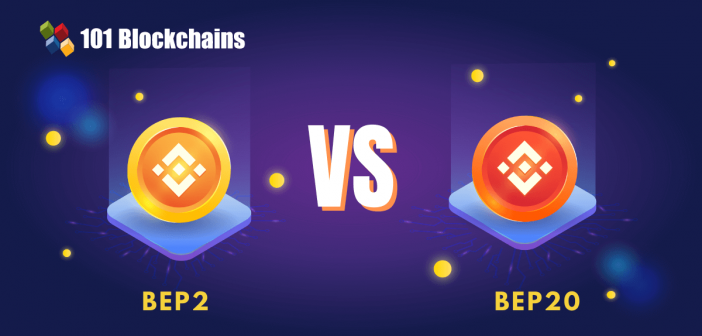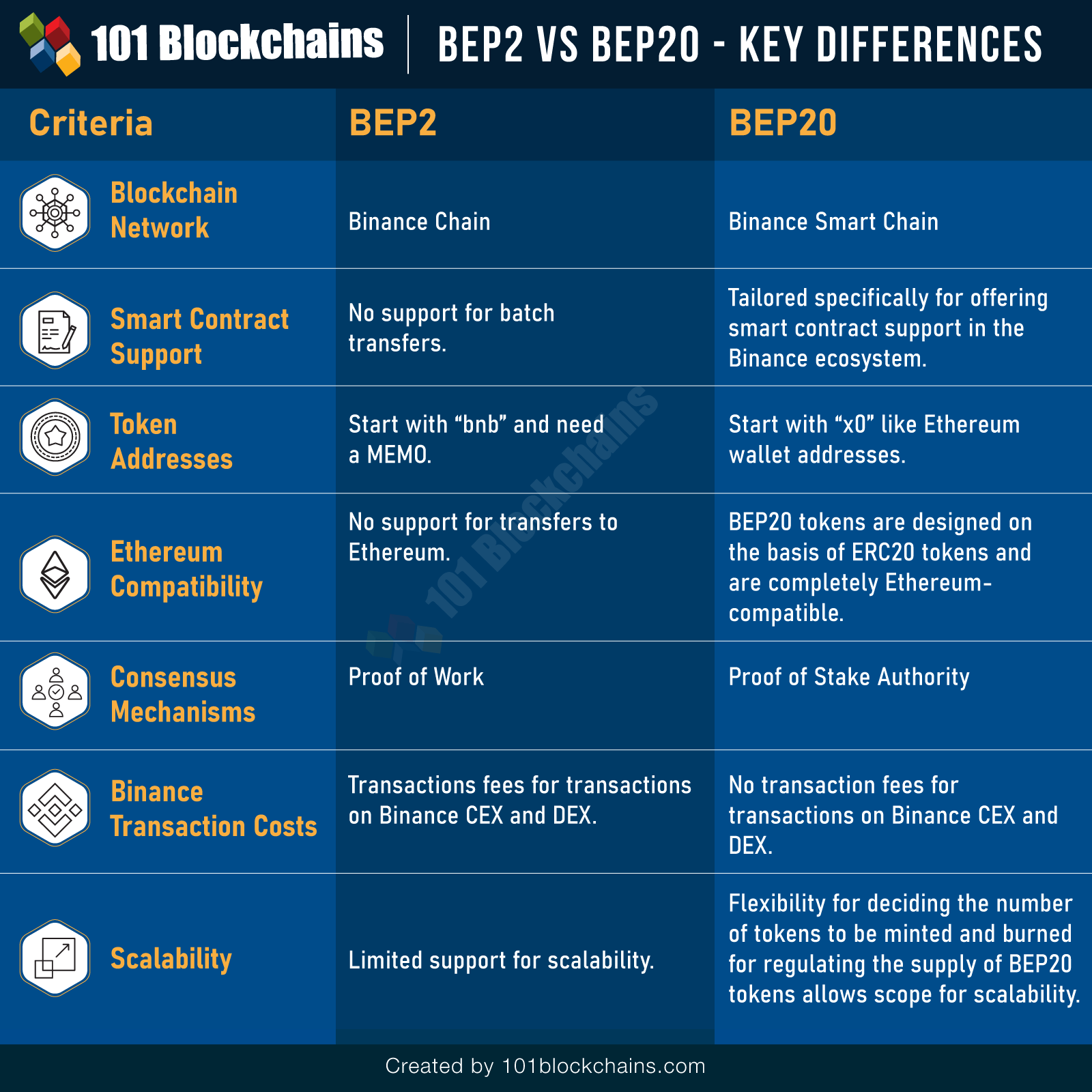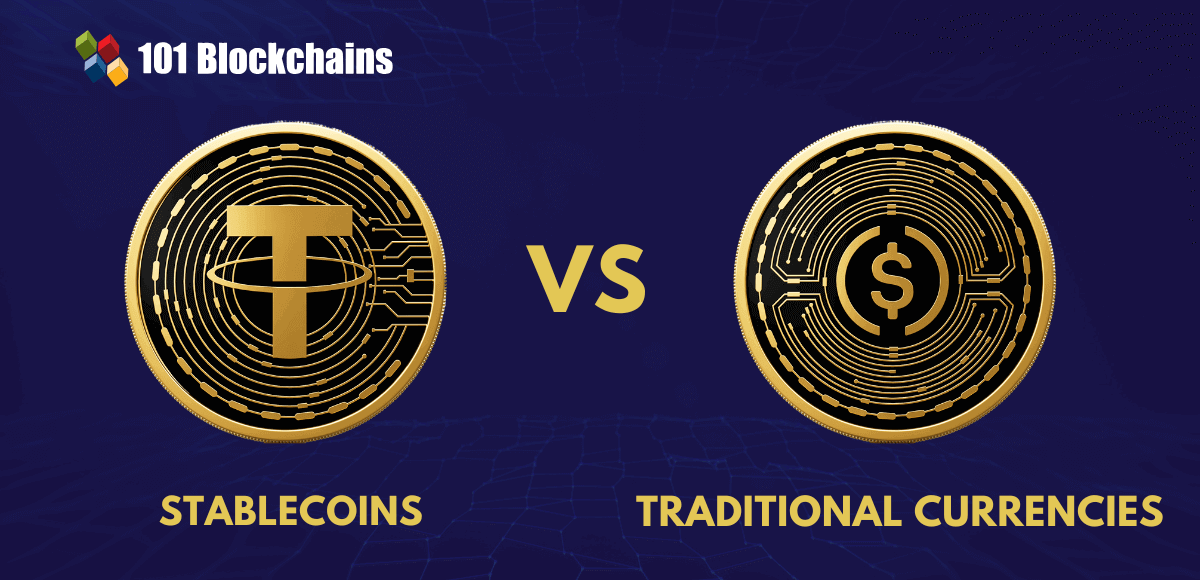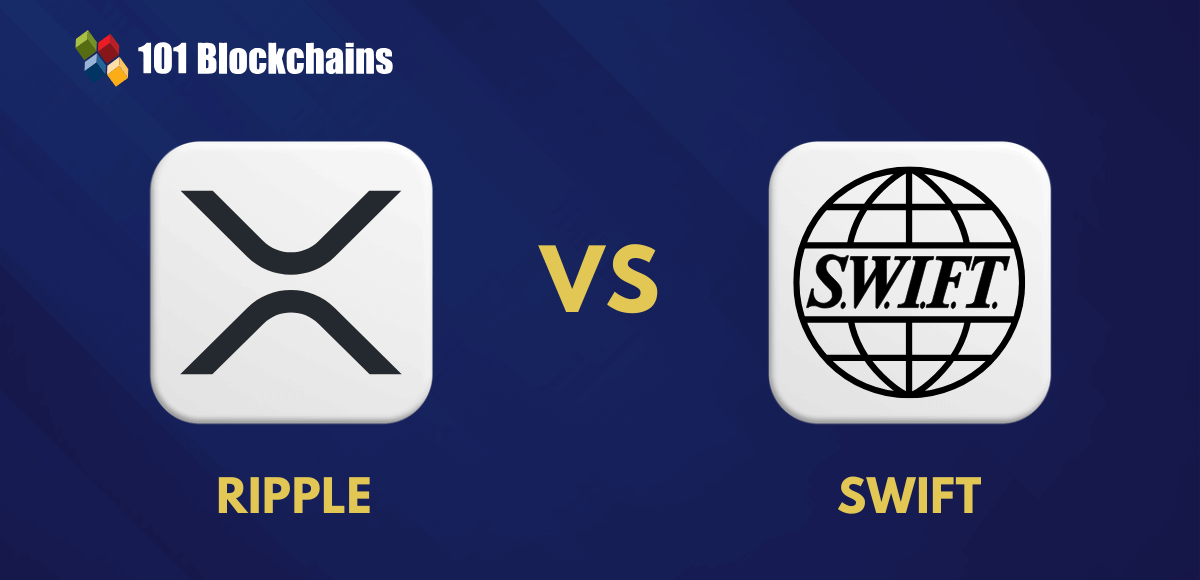Learn how blockchain truly works, master key definitions, and uncover what makes smart contracts so "smart." Dive into the fundamentals, gain valuable insights, and start your blockchain journey today!

- Comparisons
Georgia Weston
- on May 17, 2022
BEP2 Vs BEP20 – Key Differences
BEP2 and BEP20 are the two well-known token standards of the Binance chain. Let’s find out the difference between BEP2 and BEP20 i.e. BEP2 vs BEP20.
Binance is one of the biggest names in the world of cryptocurrencies and is probably the biggest centralized crypto exchange. As of 2021, Binance registered a trading volume of $9.5 million. In addition, Binance also features a unique blockchain network with two parallel blockchains, i.e., the Binance Chain and the Binance Smart Chain (BSC).
This is where you can come across the BEP2 vs BEP20 debate, as they are the native token standards of Binance Chain and Binance Smart Chain. However, it is important to note the other important highlights in differences between BEP2 and BEP20 token standards, particularly focused on their functionalities.
The following discussion offers you an overview of the difference between BEP2 and BEP20 tokens with a detailed guide on the foundations for their differences. With a comprehensive impression of the Binance Chain and Binance Smart Chain, you can figure out the differences between BEP2 and BEP20 clearly.
Build your identity as a certified blockchain expert with 101 Blockchains’ Blockchain Certifications designed to provide enhanced career prospects.
What is BEP2?
The obvious highlight in any BEP20 vs BEP2 comparison would draw attention to the definitions. First of all, it is important to take note of BEP2, which is the fundamental token standard for the Binance native coin or BNB. The standard token format worked for all the transactions on the Binance crypto exchange. BEP2 token standard was initially tailored for use on centralized as well as decentralized exchanges.
However, the standard token format for BNB presents notable restrictions for using BEP2 tokens in any other blockchain beyond Binance. Therefore, it is possible to use BEP2 tokens only as transaction fees for Binance centralized and decentralized crypto exchanges. On the other hand, token holders can convert BEP2 tokens into BEP20 tokens for applications in other Binance landscapes.
Want to know the differences between centralized exchanges and decentralized exchanges? Check the detailed guide Now on Centralized Exchange (CEX) Vs. Decentralized Exchange (DEX)
Binance Chain and BEP2
The basic overview of BEP2 sets a strong foundation for answers to “What is the difference between BEP2 and BEP20?” with some distinguishing traits. However, it is important to note that BEP2 tokens are an integral part of the Binance Chain, the first blockchain network by Binance. The Binance Chain served as the foundation of the Binance decentralized exchange, focused on processing decentralized crypto transactions.
Binance Chain can work in integration with the whole Binance ecosystem alongside the facility for interactions with Binance Smart Chain. On the other hand, it is important to note that Binance Chain does not offer support for executing smart contracts. You cannot build a dApps ecosystem with Binance Chain. On top of it, Binance Chain uses the Proof of Work consensus mechanism, much similar to Bitcoin.
Want to become a bitcoin expert? Enroll Now in Getting Started with Bitcoin Technology Course
What is the BEP20 Token Standard?
The next competitor in the BEP2 vs BEP20 debate is also a token standard for the native Binance coin, BNB, on Binance Smart Chain. BEP20 standard BNB tokens are the native tokens for the Binance Smart Chain. The most important highlight of the BEP20 token standard is the inspiration from Ethereum ERC20 token standard.
BEP20 token standard features many similarities to the ERC20 token standard and offers compatibility with Ethereum smart contracts. On top of it, BEP20 also takes an upper edge in the BEP20 vs BEP2 comparison by supporting compatibility with the Ethereum Virtual Machine. Another significant highlight of BEP20 tokens is interoperability, thereby enabling easy conversion of BEP20 tokens to BEP2 tokens.
Interestingly, the BEP2 to BEP20 Bridge serves as a vital tool for converting BEP2 tokens into ERC20 compatible tokens for linking with other blockchain networks. The basic objective underlying the origins of BEP20 primarily focuses on all the transaction requirements for different decentralized applications on Binance Smart Chain.
Excited to learn the basic and advanced concepts of ethereum technology? Enroll Now in The Complete Ethereum Technology Course
Binance Smart Chain and BEP20
The pointers in the difference between BEP2 and BEP20 would obviously revolve around Binance Chain and BSC. Binance announced the development of BSC in April 2020 and launched it in September 2020. The Binance Smart Chain emerged in response to the massive popularity of Ethereum and the associated dApps ecosystem.
In addition, new emerging fields in the domain of decentralization, such as NFT, crypto games, and NFT, have been one of the prominent reasons for driving Binance to come up with BSC. If Binance could support all these activities, then it would need a blockchain network that can support smart contracts.
While Binance Chain definitely seemed like a favorable suggestion, it was not capable of smart contracts or complex programming language. As a result, Binance Smart Chain evolved as a favorable answer to the limitations of the Binance Chain. Rather than the Proof of Work consensus, BSC utilizes the Proof of Stake Authority or PoSA consensus algorithm.
The new consensus algorithm is a prominent highlight for BSC apart from the BEP2 to BEP 20 Bridge, also referred to as the Binance Bridge. The new Proof of Stake Authority consensus algorithm helps in securing the blockchain while also enabling functionalities for creating and staking in the dApps landscape. One of the notable examples of BSC applications refers to PancakeSwap, the popular decentralized exchange.
Aspiring to Become a Certified NFT Expert? Enroll in Certified NFT Professional (CNFTP) Course Now!
Differences between BEP2 and BEP20
After a detailed impression of the Binance Chain and BSC alongside their relationship with BEP2 and BEP20, you can reflect on the differences between BEP2 and BEP20. When you take a look at both the token standards, you can find a few differences. However, there is more to the BEP2 vs BEP20 token standard comparison than the overall differences between Binance Chain and Binance Smart Chain. Here is an in-depth comparison between BEP2 and BEP20 tokens on the basis of every pointer of difference you can possibly take into account.
Here is an overview of the difference between BEP2 and BEP20, which can help you understand their broader implications –

Please include attribution to 101blockchains.com with this graphic. <a href='https://101blockchains.com/blockchain-infographics/'> <img src='https://101blockchains.com/wp-content/uploads/2022/05/BEP2-Vs-BEP20-Key-Differences.png' alt='BEP2 Vs BEP20='0' /> </a>
-
Blockchain Network
The first and obvious answer to “What is the difference between BEP2 and BEP20?” points at the Binance blockchain they work on. BEP2 tokens are native to the Binance Chain, while the BEP20 tokens are native to the Binance Smart Chain. Remember that BNB tokens can be BEP2 as well as BEP20.
-
Smart Contract Support
The second critical highlight of the differences between BEP2 and BEP20 focuses prominently on support for smart contracts. As the popularity of decentralized applications continues to reach new heights, developers are seeking reliable web3 ecosystems for new projects.
In such cases, smart contract support is a promising highlight for developers interested in creating decentralized applications and smart contract-based solutions. The support for smart contracts on Binance Smart Chain ensures flexibility for developing web3 projects and dApps. BEP20 takes the upper edge over BEP2 in terms of the support for smart contracts.
-
Token Addresses
The token addresses also serve as an important highlight in the BEP20 vs BEP2 comparison. You can differentiate a BEP2 token address from a BEP20 token address quite distinctively. The wallet address for BEP2 tokens starts with a “bnb” in the beginning, alongside implying the need for a MEMO. On the other hand, the BEP-20 tokens have wallet addresses that are quite similar to that of the Ethereum blockchain. You can notice that the wallet addresses for BEP20 tokens start with “x0” in the beginning, like Ethereum wallet addresses.
-
Ethereum Compatibility
The next evident answer to the differences between BEP2 and BEP20 tokens refers to the compatibility with Ethereum. BEP2 token standard is the first native token standard for the Binance Chain and is limited within the Binance ecosystem. It is impossible to use BEP2 tokens on other blockchain networks. On the other hand, the BEP20 token standard has been tailored to the foundations of the Ethereum ERC20 token standard.
Therefore, BEP20 gains the upper hand in the difference between BEP2 and BEP20 in terms of compatibility with Ethereum. As a matter of fact, you can discover many similarities between BEP20 and ERC20, which make BEP20 tokens compatible with the Ethereum ecosystem. Therefore, BEP20 has been designed with the vision of flexible and easy interactions with web3 ecosystem.
-
Consensus Mechanisms
The consensus mechanisms of Binance Chain and Binance Smart Chain also serve as important pointers of difference. You can notice that Binance Chain uses the Proof of Work consensus algorithm. Therefore, transactions involving BEP2 tokens are more likely to have higher costs and damage to the environment. In addition, Proof of Work is also resource-intensive, with limited possibilities for additional rewards.
The BEP2 vs BEP20 comparison turns in favor of BEP20 for its Proof of Stake Authority consensus mechanism. The Proof of Stake Authority consensus mechanism in BEP20 tokens enables access to opportunities for staking. At the same time, users have the advantage of better speed and lower costs for transactions.
Developers are turning towards Binance Smart Chain for the support of BEP20 token standard in creating web3 solutions with staking facilities. On the other hand, the Proof of Stake Authority consensus mechanism ensures limited damage to the environment.
-
Transaction Costs on the Binance
The BEP20 vs BEP2 comparison would also draw the limelight on the burden of transaction fees. Developers are more worried about the transaction costs, as it can make or break the appeal of their new projects. BEP2 tokens impose transaction fees on the Binance CEX and DEX, thereby presenting a massive cost burden. On the contrary, BEP20 tokens don’t imply the need for any transaction fees for Binance CEX and DEX.
-
Scalability
The unique parameters of BEP20 tokens also mark a prominent entry in answers to “What is the difference between BEP2 and BEP20?” which can match the growing needs for scalability. Unlike BEP2 tokens, the minting and burning parameters of BEP20 tokens can help developers configure the number of new tokens required or the number of tokens you have to burn.
The flexibility for controlling the supply and demand of BEP20 tokens definitely serves as a boost for scalability of BEP20 projects. In addition, you have the given advantage of compatibility with Ethereum in BEP20, which support its claim for scalability.
Get familiar with the terms related to ethereum with Ethereum Flashcards
Final Words
On a concluding note, the debate on BEP2 vs BEP20 ends up in favor of BEP20. BEP2 is undoubtedly the original token standard in the Binance ecosystem. However, BEP20 is the driving force behind the change that can empower Binance for the web3 ecosystem. Whether it is the support for smart contracts or compatibility with Ethereum, BEP20 has all the right ingredients to build the future of Binance.
On the other hand, you cannot exclude BEP2 tokens completely from the picture as they are an integral highlight of the Binance platform. Interestingly, the BEP2 to BEP20 Bridge has made it easier to ensure interoperability between Binance Chain and Binance Smart Chain. Will both the token standards work independently or merge in the future? Learn more about the Binance Smart chain and find the answers.
*Disclaimer: The article should not be taken as, and is not intended to provide any investment advice. Claims made in this article do not constitute investment advice and should not be taken as such. 101 Blockchains shall not be responsible for any loss sustained by any person who relies on this article. Do your own research!





